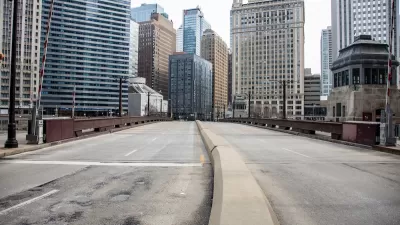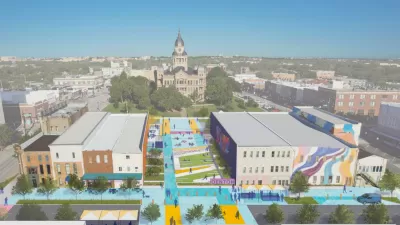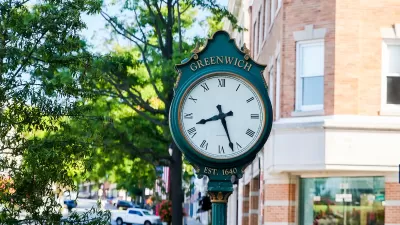Traditionally car-friendly Business Improvement Districts are turning to walkability and bike infrastructure to replace the 9-to-5 crowd and boost local economies.

In a piece for Bloomberg CityLab, John Surico describes the historically car-oriented politics of Business Improvement Districts (BIDs), business groups that emerged in the 1970s as a response to declining downtown conditions. “Historically, BIDs also typically favored access for cars, prioritizing suburban commuters and visitors with amenities like parking discounts and public lots. Indeed, the built environment of the American downtown — a ‘precarious urban monoculture’ optimized for white-collar work — is one that these groups helped cement into being.”
Now, “it’s striking to see the same groups now bang the gong for bike lanes, vehicle bans and pedestrian-focused facelifts. Reeling from the rise of remote work and the ongoing effects of the Covid pandemic, business groups are embracing policies and practices they long shunned.”
While not all BIDs are changing their views, many in the country’s biggest cities are recognizing the value of pedestrian and bicycle traffic and reorienting their efforts to new downtown residents and visitors in the post-pandemic era. “The paradigm shift that’s now underway could pay big dividends for walkability boosters — and be crucial to the survival of the urban core.”
“It took decades to create the modern office district; now that its critical vulnerabilities have been exposed, adapting these neighborhoods to again welcome a more diverse set of uses stands to be a similarly prolonged process.” Surico points out that BIDs, with their significant influence and resources, can be a key partner in creating more livable, walkable downtowns.
FULL STORY: As Downtowns Struggle, Businesses Learn to Love Bike Lanes

Study: Maui’s Plan to Convert Vacation Rentals to Long-Term Housing Could Cause Nearly $1 Billion Economic Loss
The plan would reduce visitor accommodation by 25,% resulting in 1,900 jobs lost.

North Texas Transit Leaders Tout Benefits of TOD for Growing Region
At a summit focused on transit-oriented development, policymakers discussed how North Texas’ expanded light rail system can serve as a tool for economic growth.

Why Should We Subsidize Public Transportation?
Many public transit agencies face financial stress due to rising costs, declining fare revenue, and declining subsidies. Transit advocates must provide a strong business case for increasing public transit funding.

How to Make US Trains Faster
Changes to boarding platforms and a switch to electric trains could improve U.S. passenger rail service without the added cost of high-speed rail.

Columbia’s Revitalized ‘Loop’ Is a Hub for Local Entrepreneurs
A focus on small businesses is helping a commercial corridor in Columbia, Missouri thrive.

Invasive Insect Threatens Minnesota’s Ash Forests
The Emerald Ash Borer is a rapidly spreading invasive pest threatening Minnesota’s ash trees, and homeowners are encouraged to plant diverse replacement species, avoid moving ash firewood, and monitor for signs of infestation.
Urban Design for Planners 1: Software Tools
This six-course series explores essential urban design concepts using open source software and equips planners with the tools they need to participate fully in the urban design process.
Planning for Universal Design
Learn the tools for implementing Universal Design in planning regulations.
Ascent Environmental
Borough of Carlisle
Institute for Housing and Urban Development Studies (IHS)
City of Grandview
Harvard GSD Executive Education
Toledo-Lucas County Plan Commissions
Salt Lake City
NYU Wagner Graduate School of Public Service





























